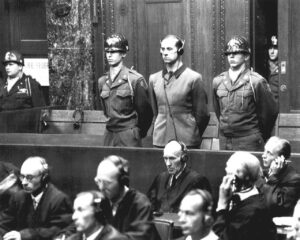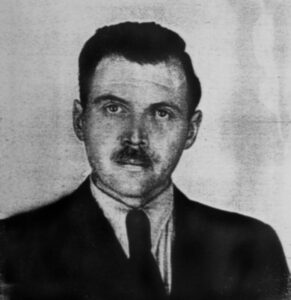
As the Nazi party rose to power in Germany, their Aryan race ideals rose with them. Those in the science field, namely those in the medical profession, were used to certify the reasoning of race dominance and carry out experiments and mass killings of those deemed “dangerous” to the Aryan race.
The earliest form of this took place in the euthanasia program. Beginning in 1939, doctors, including Karl Brandt, Hitler’s personal physician, began organizing and carrying out “mercy killings” of the elderly; mentally, terminally, or incurably ill; or deformed children. Considered useless to the development of the German state and war machine, these victims were usually killed by gassing or by lethal injection. This not only occurred in Germany, but also was carried into German occupied or annexed countries over the span of the war.
The second form took place through experiments. Several doctors, many placed in concentration camps, were used to facilitate experiments on prisoners as well as to make the mass executions more efficient. The experiments broke down into three categories: facilitating the survival of the German military, developing treatment of diseases and injuries that could be encountered in the field, and advancing the knowledge of race and status comparable to the Nazi view of the subject of race superiority.
In order to ensure the survival of German soldiers on the front, doctors used concentration camp prisoners to test extreme conditions that soldiers might find themselves in to see how the human body reacts. This includes air pressure experiments, where the subjects would be place in a low pressure chamber so the doctors could see from how high up could German airmen parachute. They also conducted freezing experiments, where they submerged camp prisoners in freezing water to see how to effectively treat hypothermia.
Doctors in Sachsenhausen, Dachau, Natzweiler, Buchenwald, and Neuengamme also tested their inmates with immunization treatments to see their effects on infectious diseases, which was one of the great killers of both military and civilian populations during wartime. This included bone-grafting experiments and exposure to different types of gasses to see if they could be used as anecdotes.

The most notorious of these experiments fall under the last category. Headed by doctors such as Josef Mengele, experiments were done to see how the matter of race affected the human body. Operations were done without amnesia, organs were removed, and women were serialized. Mengele himself was famous for his horrendous twin studies. Extraneous and painful examinations were done on sets of non-Aryan twins for documentation purposes, then the twins were killed and dissected, to see if their bodies had reacted the same way. These doctors also had a hand in determining how the prisoners of the camp were dealt with, including deciding who would be sent to the gas chambers immediately and who was fit to work in the camps. These atrocities continued until the camps were shut down near the end of the war.
In October 1946, in an attempt to bring these physicians to justice, the Nuremburg Medical Trial began for the experiments and acts done between 1933 and 1945. Fifteen of the twenty-seven defendants were found guilty, seven of those receiving the death penalty. Only one, Karl Brandt, was found guilty of war crimes; he was executed in 1948. Several doctors died before their trials could begin and some, like Mengele, were never indicted at all.
Back to Crime Library
|
|
|
